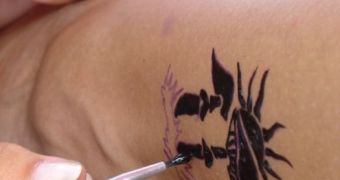A group of investigators from the University of Illinois in Urbana-Champaign (UIUC), led by materials scientist John Rogers, is working on developing elastic electronics. These devices could be used for a variety of applications, primarily in medicine and biotechnology.
Replacing tough, silicon-based electronics with more flexible counterparts is absolutely essential if experts want to become able to create implantable electronics that can monitor various bodily parameters for prolonged periods of time.
For instance, scientists could create a series of electronics that would be able to detect an emerging epileptic seizure, and then prevent it before it occurs. An electronic mesh could be placed around the heart, providing round-the-clock monitoring capabilities, and detecting any irregularities in time.
The technology to create these devices exists today. The only problem is that the silicon wafers on which current electronics are built are tough and brittle, and therefore cannot bend or twist. These are essential capabilities if an organic type of electronics is to be created.
“We're trying to bridge that gap, from silicon, wafer-based electronics to biological, 'tissue-like' electronics, to really blur the distinction between electronics and the body,” Rogers explains. He and his team are using a grant from the US National Science Foundation (NSF) for this research.
Northwestern University engineer Yonggang Huang has been working with Rogers towards developing elastic electronics for years. They were able to produce circuits that can endure in the human body. The devices are made out of tiny, wavy silicon structures that have extremely thin circuits
“As the skin moves and deforms, the circuit can follow those deformations in a completely noninvasive way,” Rogers explains. This is what the team calls a “bio-integrated” medical device. Such an implant would not create damage on the human body.
The group has already developed a practical device based on this approach. Their “electronic sock” was recently tested on rabbits. In these experiments, the animals had their hearts surrounded by a mesh of organic electronics, which was designed so that it would accommodate the heart's rhythm, while always remaining in contact with the actual tissue.
The team says that such a mesh could be used to deliver small currents to the heart, helping to correct small arrhythmias as they occur. Needless to say, the mesh would also be able to detect the disorder in the first place.

 14 DAY TRIAL //
14 DAY TRIAL //